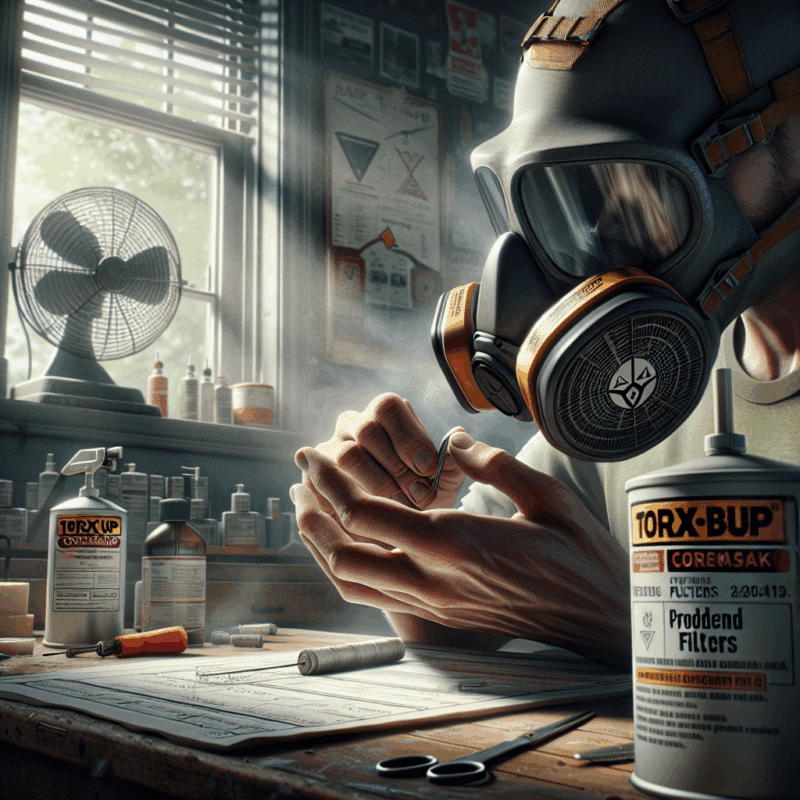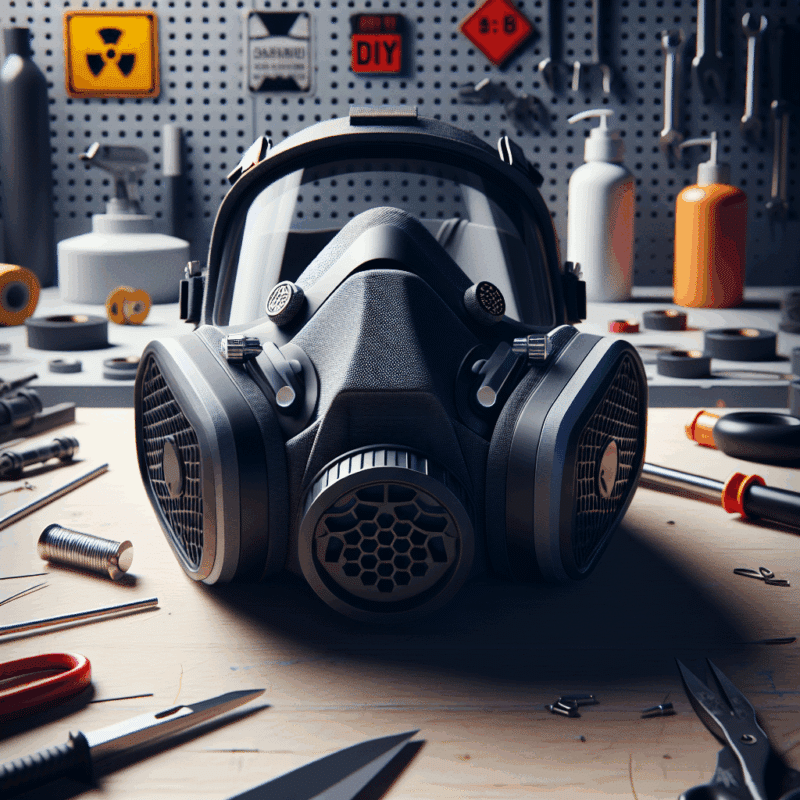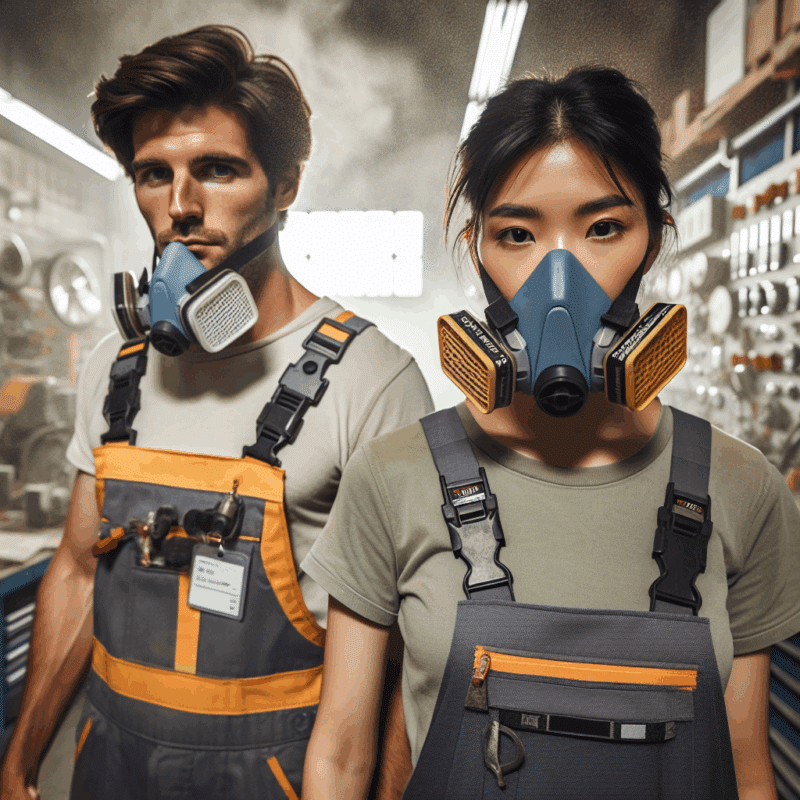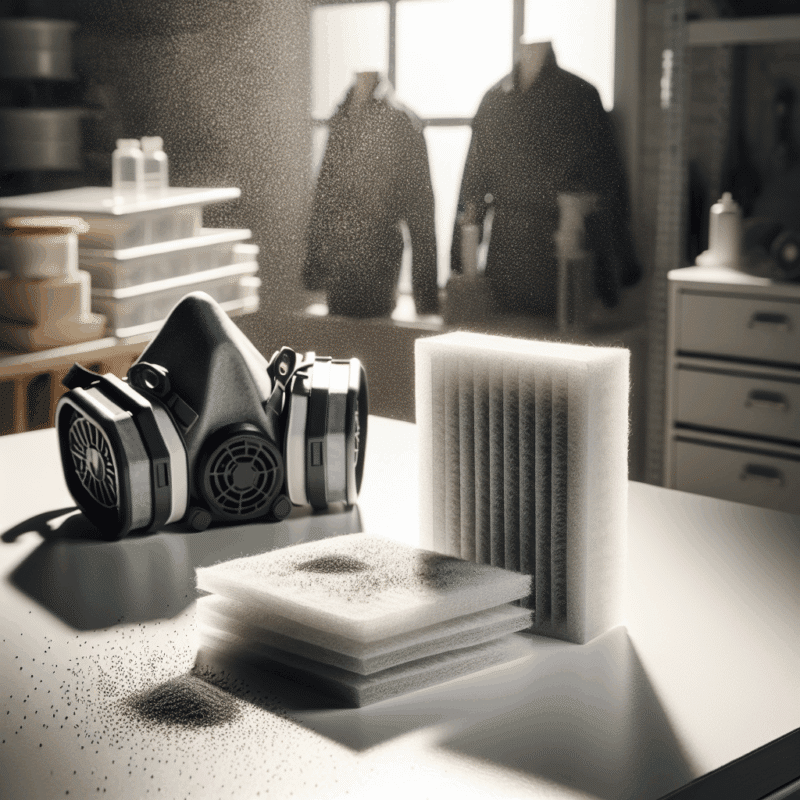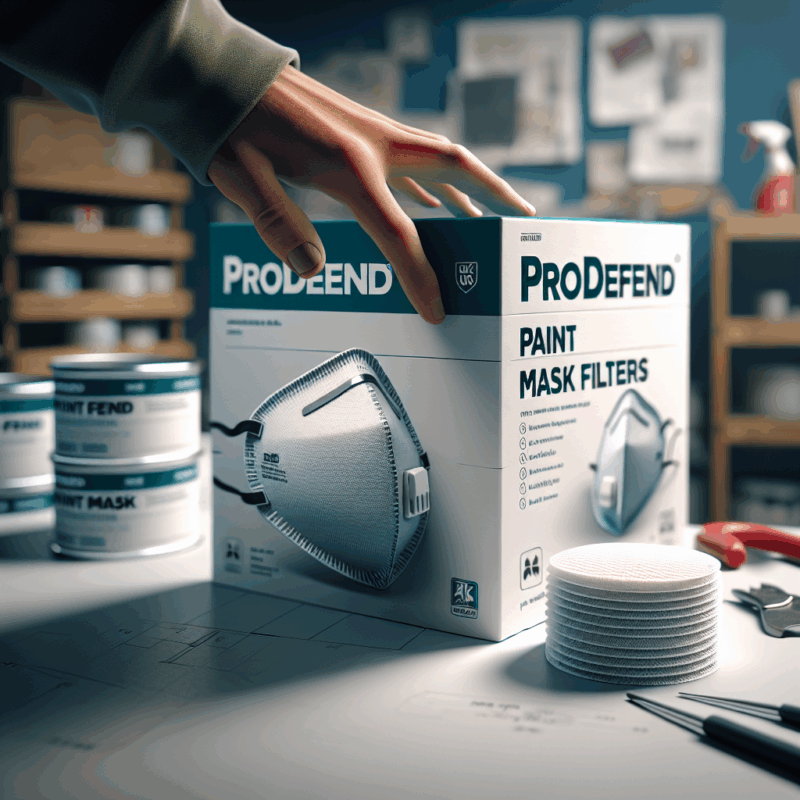Which Respirator for Home Resin Fumes? ProDefend vs CoreMask Guide
In This Article
- Always choose a resin fumes respirator with certified A2P3 filters.
- Ensure proper fit and a reliable face seal, especially if using frequently.
- Replace filters regularly and monitor for signs of saturation or resistance.
- Complement your respirator use with sound workspace ventilation and protective gear.
- Know your application — light crafting and large pours may require different levels of protection.
Understanding Resin Fume Risks at Home
The Dangers of Inhaled VOCs
When working with epoxy and polyester resins, many DIYers underestimate the health risks posed by resin fumes, particularly in poorly ventilated home environments. A high-quality resin fumes respirator is essential to shield your lungs from the invisible but harmful volatile organic compounds (VOCs) that are released as resin cures. These VOCs consist of tiny airborne particles and gases that can cause immediate symptoms such as headaches, dizziness, and nausea.
However, the more alarming threat lies in long-term exposure. Studies have shown that repeated inhalation of resin fumes may result in chronic respiratory issues, damage to the central nervous system, and sensitisation, which makes future exposure increasingly dangerous.
Home workshops, garages, and sheds often lack industrial-standard ventilation. Without the proper protective gear like a certified resin fumes respirator, crafters risk inhaling toxic fumes over extended sessions. Children and pets in the same space also become vulnerable due to their heightened sensitivity to pollutants.
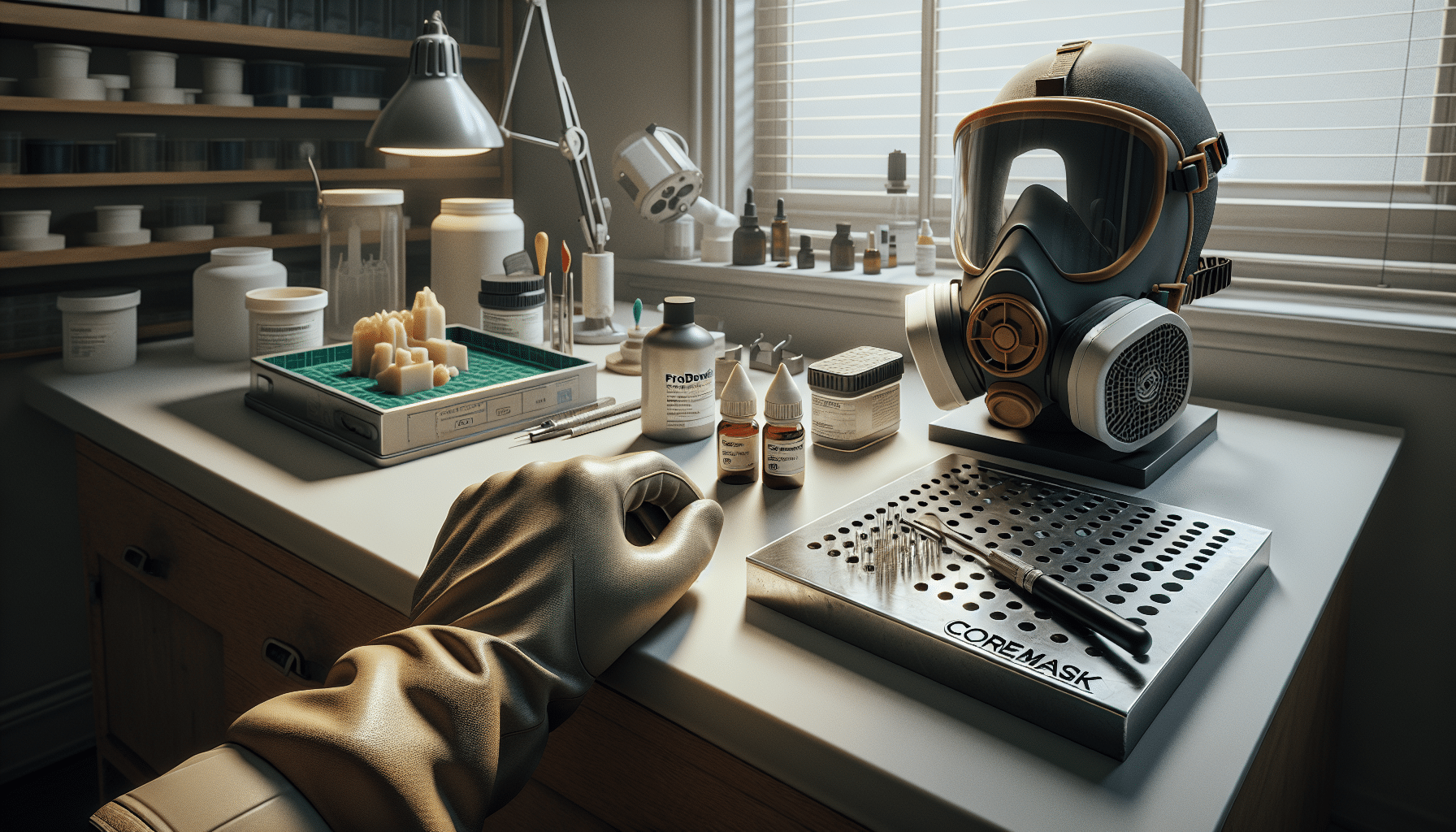
How Respirators for Resin Work
Filter Ratings and Applicability
A properly rated resin fumes respirator works by creating a tight seal over the nose and mouth while filtering harmful airborne particles. The filters do all the heavy lifting — absorbing and neutralising VOCs before they can enter your lungs. These filters are categorised by EN standards in the UK, with P1, P2, and P3 ratings indicating increasing levels of filtration efficiency for solid and liquid particles. For resin tasks, P3 filters are recommended thanks to their ability to trap 99.95% of particles.
However, when dealing with vapours and gases like VOCs, particle filters alone aren’t enough. This is where activated carbon filters come into play. These filters can adsorb organic vapours, making them the ideal companion in a dual-filter system. A high-quality resin fumes respirator for home use will typically feature combination filters — such as A2P3 cartridges — to tackle both vapours and particulates.
Respirators are available in both half-face and full-face options. While half-face masks provide sufficient protection when used with goggles, full-face respirators offer integrated eye protection and improved seal integrity. The right choice often depends on your workspace, comfort, and frequency of resin use.
“The use of an A2P3 filter is strongly recommended for any resin-based application indoors. It ensures protection against both fine particulates and organic vapours.” — Occupational Health & Safety Council
Top Considerations for DIY Resin Users
When choosing a resin fumes respirator, several key factors should guide your decision. First, always verify that the respirator is certified to meet EN standards (such as EN 140 or EN 14387 in the UK). A product that lacks compliance may offer insufficient protection, leaving you vulnerable to harmful exposure.
Next, consider the duration and intensity of your resin work. Are you casting large pieces every weekend, or are you a casual hobbyist working on coasters? Longer sessions may require a full-face design or a model with replaceable, higher-capacity filters. For periodic use, a durable but simpler half-face model may suffice.
Fit and seal are crucial — without a proper seal, even the best filters are compromised. Look for models that offer adjustable straps, soft silicone face pieces, and multiple sizes. Some respirators also include speech diaphragms, enhancing communication during team projects.
Finally, cost is always a factor, but your health should never be compromised for savings. High-end respirators often come with reusable components and replaceable filter cartridges, ultimately saving money over time. Don’t hesitate to invest in your safety — a high-performance resin fumes respirator is a cornerstone of responsible DIY resin use.
ProDefend Respirator: Features & Fit
The ProDefend respirator is frequently praised by professionals and serious hobbyists alike. This model provides a robust defence against both particle and vapour hazards owing to its included A2P3 filters and superior silicone seal. Users find it particularly suited for extended sessions, thanks to its soft, flexible facepiece and evenly distributed weight via adjustable dual-head straps.
One of the standout features of the ProDefend is its quick-release buckle system. This makes donning and removing the respirator much faster — a blessing during step-by-step resin application processes. The design is compatible with both safety goggles and full-face shields, making it adaptable for multitaskers working in complex environments.
The filters are easily replaceable, and the respirator’s modular design guarantees longevity. Whether you’re a resin artist or a DIY table-maker, the ProDefend combines comfort with industrial-grade protection, making it a trusted resin fumes respirator.
CoreMask Respirator: Long-Wear Comfort
For resin users who prioritise comfort during long wear, the CoreMask has become a go-to solution. Crafted from hypoallergenic medical-grade silicone, this half-mask respirator offers a skin-friendly experience with no compromise on safety. Combination A1P3 filters effectively screen out all common resin fumes while keeping breathing resistance to a minimum.
This respirator boasts ergonomic engineering with thoughtful airflow direction, reducing fog on protective goggles. The CoreMask also features a low-profile design, allowing users to wear glasses or glare-reducing visors without discomfort.
Its intuitive locking mechanism ensures filter security, while its antimicrobial strap system offers excellent hygiene for shared use in maker spaces. Ideal for artists doing jewellery casting or small-scale resin projects, it’s a reliable resin fumes respirator tailored for comfort-driven protection.
Filter Technology: Activated Carbon vs P3 Filters
Understanding filter technology is indispensable when selecting a resin fumes respirator. P3 particle filters offer superior protection against microscopic solid and liquid aerosols, ensuring your lungs are shielded from even the finest resin dust. However, they fall short in blocking organic vapours, which are gaseous by-products of uncured resin.
Activated carbon filters, conversely, use highly porous carbon to trap and neutralise these vapours through adsorption. They are crucial when working indoors, where VOC concentration can reach hazardous levels. The best respirators integrate both filter types — typically in the form of A2P3 charcoal cartridges. This combination ensures holistic protection, enabling you to work confidently and safely across a range of resin crafts.
Signs It’s Time to Replace Your Filters
Even the best filters become ineffective with time or heavy usage. To maintain top-level protection, you must watch for signs that your resin fumes respirator filters need replacing. If you start detecting a smell through the mask or experience discomfort such as irritation or dizziness, these are red flags that your filters are saturated.
Further indicators include increased breathing resistance and visual signs of filter clogging or discolouration. For regular users, it’s advisable to replace carbon filters every 20–40 hours of use, depending on resin type and working conditions. Particle filters should be swapped when noticeably dirty or if airflow drops substantially.
For maintenance tracking, consider keeping a filter usage log and date your cartridges. Modern respirator models often allow modular replacement, meaning you can replace only the affected component rather than the entire mask. This routine ensures ongoing safety and cost-effective protection for your projects.
Additional Resin Safety Tips for Home Use
Wearing a resin fumes respirator is just one part of a broader safety strategy. Always ensure your workspace is well ventilated. Open windows and use extractor fans or fume hoods wherever possible. Place your resin projects downwind and at arm’s length from your breathing zone while working.
Wear protective gloves, long sleeves, and eye protection to prevent skin contact. Install spill containment products such as silicone mats and absorbent pads to manage resin leaks. Never eat or drink around resin, as cross-contamination can occur easily. Also, make sure to store your materials in tightly sealed, labelled containers away from direct sunlight or heat sources.
For further home setup guidance, see Learn more about DIY Respiratory Protection and Mask Selection. For professional resin safety guidelines, view Learn what filters work best for resins.
Expert FAQs About Resin Respirators
Q: Can I use a dust mask instead of a proper respirator?
No. Dust masks lack the chemical filtration needed to absorb VOCs. Only certified respirators with appropriate filters are suitable for safe resin use.
Q: Is a full-face respirator necessary?
Not always, but it may be preferred if eye protection from fumes is also required. Half-face options are fine when paired with suitable goggles.
Q: Are reusable or disposable filters better?
Reusable filter cartridges often prove more economical and environmentally friendly over time. Disposable units are simpler but must be replaced more frequently.
Q: Can I wear my respirator with a beard?
No. Facial hair compromises the seal and reduces effectiveness. For proper protection, the seal must be flush against clean skin.
Need more specialised advice? Check Read a related article or consult See how digital systems aid compliance for regulator-endorsed equipment lists.
Summary: Choosing the Right Respirator
[CONCLUSION_CONTENT]
Great guide on which-respirator-for-resin-fumes-at-home – Community Feedback
What type of respirator is needed for resin fumes at home?
A half-mask respirator with certified organic vapour (A2) and P3 particulate filters is recommended for home resin work. Both ProDefend and CoreMask systems with carbon filters are suitable.
Are N95 masks effective against resin fumes?
No, N95 masks only filter particulates, not volatile organic compounds. For resin fumes, you need a mask with activated carbon or organic vapour cartridges.
How often should I replace filters in my resin respirator?
Filters should be replaced as soon as you detect resin odours through the mask or as instructed in the respirator’s manual, typically after several hours of use or heavy exposure.


